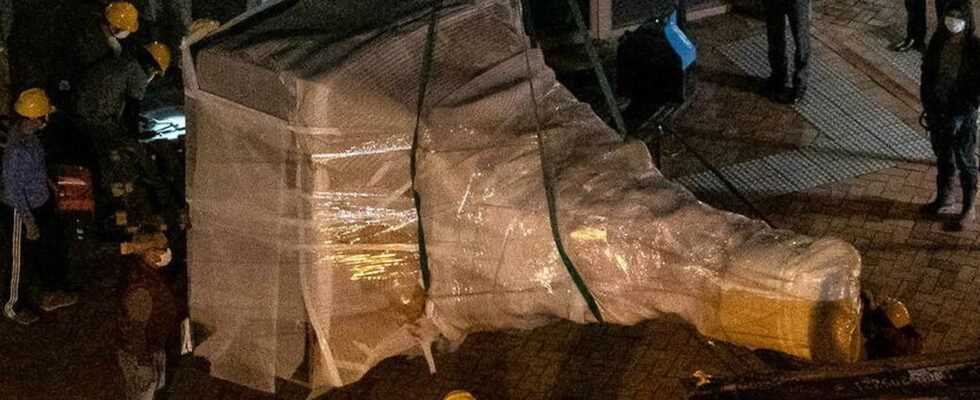VS’is a symbol of freedom that begins to disappear. The “Pillar of Shame”, a statue honoring victims of the Tian’anmen crackdown, was removed from Hong Kong University (HKU) on Thursday (December 23). This monument had been present on the site for 24 years. “The decision regarding the old statue was made on the basis of external legal advice and a risk assessment for the best interests of the university,” the facility said in a statement.
Groups and locations commemorating the June 4, 1989 crackdown in Beijing have become targets of Beijing’s draconian national security law. Hong Kong has long been the only place in China where the commemoration of the events of Tian’anmen was tolerated. Every year, HKU students cleaned the statue installed on their campus in 1997 to honor the victims of these events.
READ ALSOChina: where is Xi Jinping?
Suppress dissent
But Beijing left its authoritarian mark on the former British colony after the large and sometimes violent protests of 2019, imposing a national security law that criminalized virtually any form of dissent. In October, HKU officials ordered the removal of the eight-meter-tall sculpture of a tangle of 50 bodies deformed by pain, already citing legal risks, without specifying which ones.
The “Pillar of Shame”, eight meters high, was sheltered from view on Wednesday behind tarpaulins and barriers before being unbolted the next morning to be stored elsewhere, according to the university. In its press release, the institution ensures that no one had obtained formal authorization to exhibit this statue and cites an ordinance dating from the colonial era to justify its removal. This law includes the crime of sedition and has recently been increasingly used by authorities – alongside the new National Security Law – to suppress dissent.
READ ALSO Hong Kong: the great roundup of the opposition
#BREAKING whole area around the #PillarOfShame in #HKU has been covered up by white plastic sheets and surrounded by yellow boards. Lots of noises can be heard but security guards have been driving me away and asking me not to film, while refusing to answer what’s going on. pic.twitter.com/PgLl9XzHpK
– Xinqi Su 蘇 昕 琪 (@XinqiSu) December 22, 2021
“If they destroy it, we will pursue them”
As workers bustled around the statue at night, the author of the work found it “strange” and “shocking” that the university attacked the sculpture, which he said remains a private property. “This sculpture is really expensive. So if they destroy it, then of course, we will pursue them, ”added the Danish Jens Galschiot to Agence France-Presse. The latter says he tried to contact the university with the help of lawyers and offered to resume his work. He also assures that HKU officials never warned him of the dismantling. The removal of the statue has been decried by exiled pro-democracy activists, still very followed by their many subscribers on social networks.
Since Beijing’s grip, dissenting voices have gradually died down on Hong Kong campuses, once oases of freedom not subject to the censorship that permeates mainland Chinese faculties. Protests have been banned, many student unions blacklisted, and new national security courses introduced. For 30 years, a candlelight vigil was held in Hong Kong for the anniversary of Tian’anmen, bringing together tens of thousands of people. With its slogans for democracy, this meeting was a symbol of the freedom of expression enjoyed by the former British colony.
